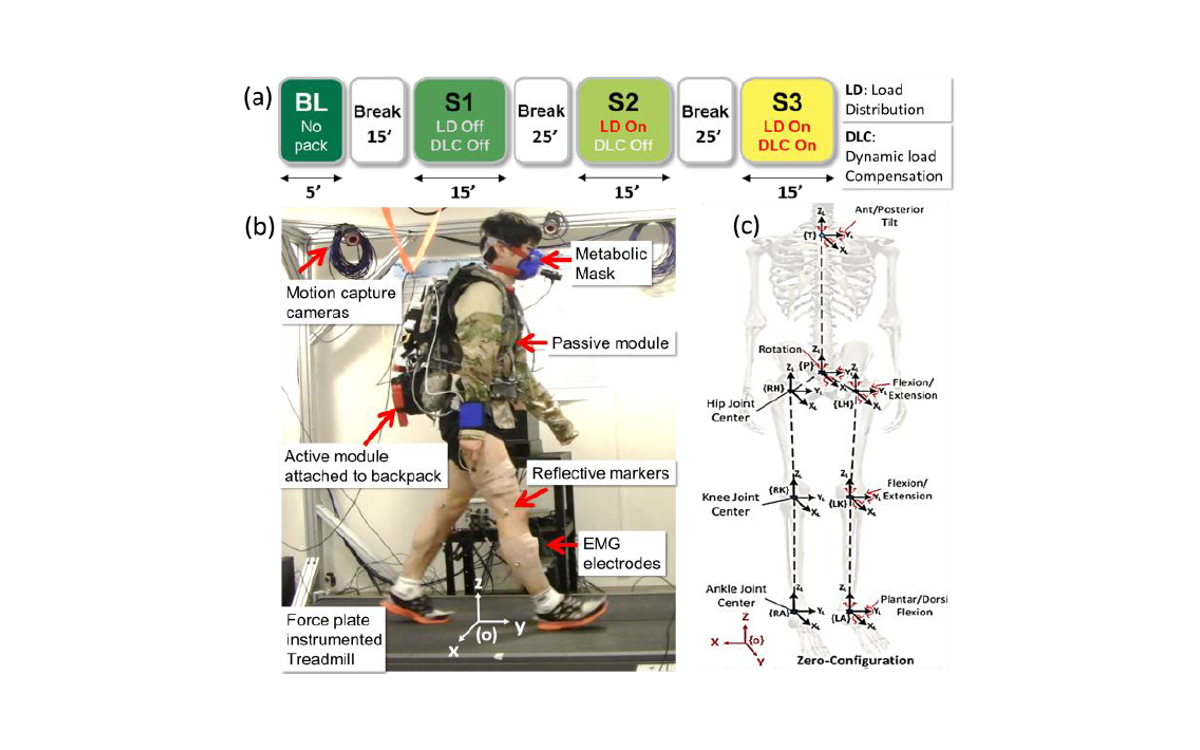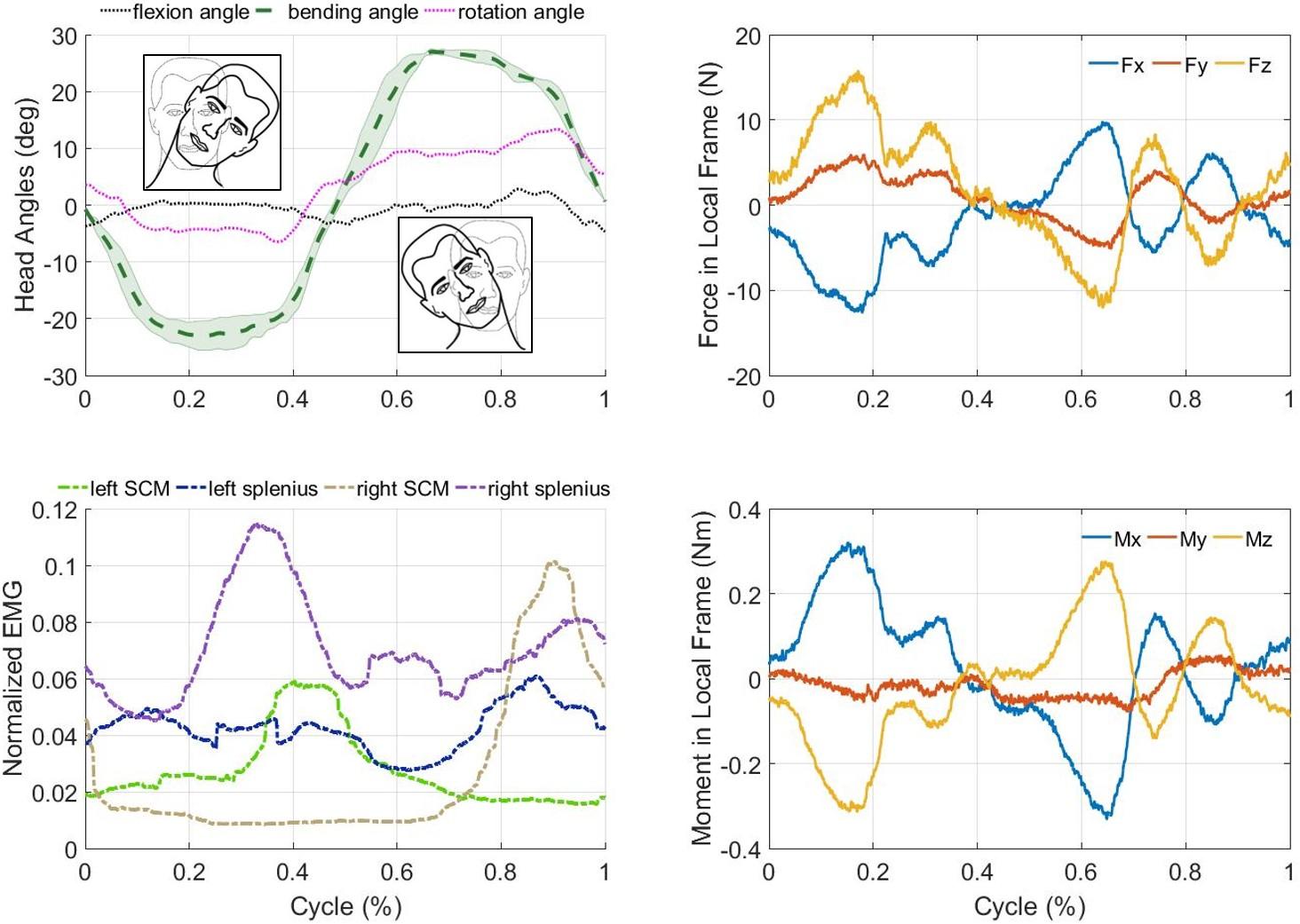The studies are focused on characterizing, augmenting, and training movements of the upper body, such as the torso and neck. Many children are unable to keep their trunk straight without support, due to poor strength or coordination. The goal of these projects are to come up with novel methods for strengthening and training of the upper body, including the spine and the neck. Humans carry heavy backpacks, including children going to school and army personnel in the field. Our lab also looks at designs of technologies that can facilitate more efficient load carriage.
Image Carousel with 3 slides
A carousel is a rotating set of images. Use the previous and next buttons to change the displayed slide
-
Slide 1: Posture training with TruST
-
Slide 2: Neck brace assisting head movement
-
Slide 3: Load distribution during walking with a backpack

Posture training with TruST

Neck brace assisting head movement

Load distribution during walking with a backpack
Target Population
Studies
Dynamic seated trunk control is required during the execution of many everyday tasks. These tasks require an intricate coordination between the head, upper and lower trunk, and the pelvis. Furthermore, reaching beyond the arm’s length requires precise joint control and intersegmental coordination. With practice specificity, humans can learn particular motor skills that may be performed across contexts of similar characteristics. As new tasks are explored, human movements are learned and organized by the release and constraint of degrees-of-freedom, and the modulation of joint amplitudes that are specific to the task demands. Thus, by providing seated reach training without foot support that challenges postural control close to and beyond the stability limits or point of stability failure, an individual with an optimal level of trunk assistance could improve postural control by increasing the range of motion of the trunk and expand the boundaries that define the point of stability failure.

We conducted a proof-of-concept study using TruST with 20 healthy adults (10 experimental and 10 control) to investigate the changes in lower trunk center of mass (CoM) displacement and trunk kinematics. Our study supports the hypothesis that a single training session with TruST at and beyond the point of stability failure increases lower trunk CoM displacement and increases the lower trunk and pelvic rotation.

The findings suggest that this approach may be useful for training patients with neurological and musculoskeletal disorders where children or adults have compromised postural stability.
A dynamic neck brace has been developed to provide external assistance to human head movement. It is particularly helpful for people who suffer from dropped head syndrome. With the brace, a user can position the head by commanding the angles of a joystick and the motors mounted on the brace can be therefore controlled to move the head.
A pilot study has been performed to evaluate the performance of this brace with eight healthy subjects. We hypothesized that the healthy subjects would activate less muscle forces in order to perform the head movement with this brace. Surface Electromyography (sEMG) sensors were placed on six neck/shoulder muscles to monitor the activation of the muscles and a VICON motion camera system was used to verify the motion of the brace. The brace was operated in position control mode and a sxi-axes force/torque sensor was installed to record the interactive force/torque being transmitted through the brace to the human head.

The brace was proved to be easy and safe to use. It showed promising accuracy in positioning the head movement, and the movement was shown to be assisted, as indicated in Fig. 1. The hypothesis was validated that the activation from the neck muscles significantly reduced when using the brace.

Carrying a heavy backpack can increase the risk of musculoskeletal injuries. The metabolic cost and muscle activities have been found increased during walking activities with backpacks. Additionally, in order to maintain stability, the posture changes to adapt the change in load during walking.
In this study, we showed a way of reducing metabolic cost of walking with a backpack using load distribution and dynamic load compensation, provided by a wearable upper body device. It was hypothesized that by biomechanical and physiological measurements on a group of young healthy subjects, as they walked on a treadmill under different conditions.
The results showed reductions in gait and postural adaptations, muscle activity, vertical and braking ground reaction forces, and metabolic cost. We concluded that the device can potentially reduce the risk of musculoskeletal injuries and muscle fatigue associated with carrying heavy backpack loads while reducing the metabolic cost of loaded walking.
